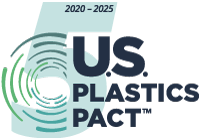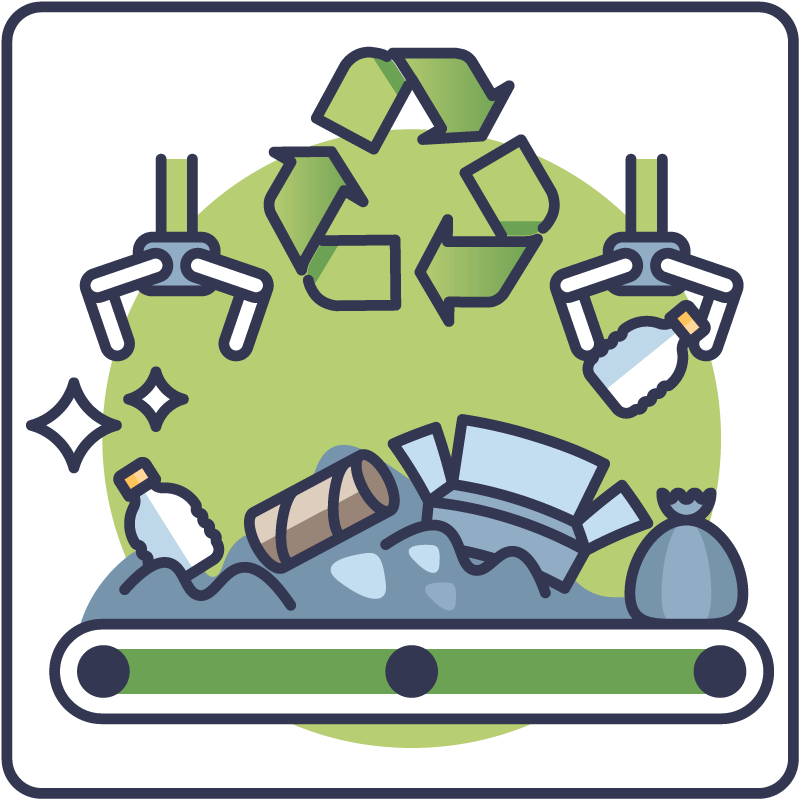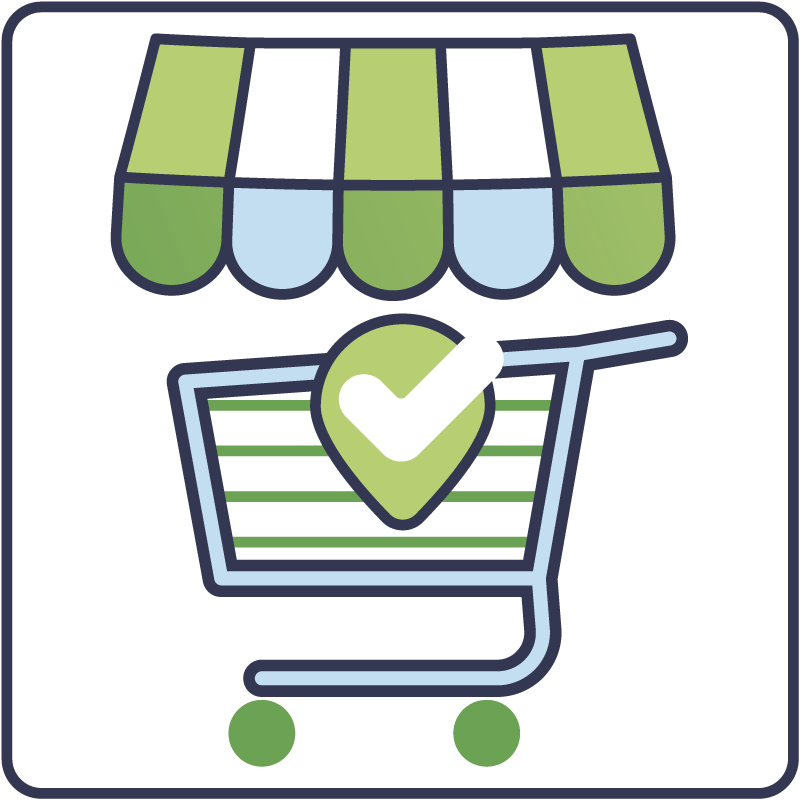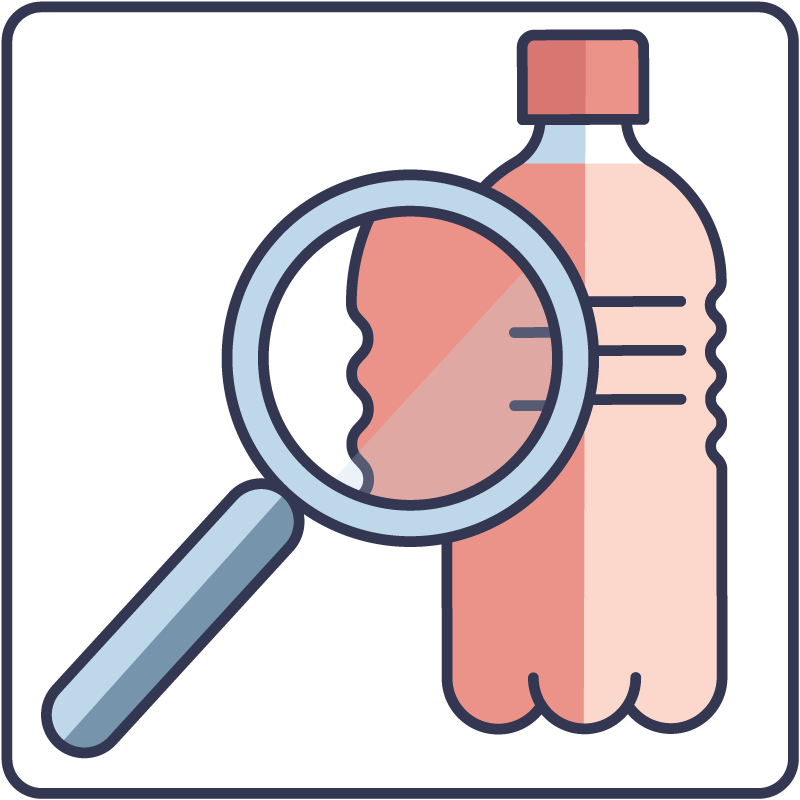What is Postconsumer Recycled Content and is it Safe?
The full technical standard can be found in ISO 14021, but in simple terms, postconsumer recycled content is material that met the end of its initial intended use and was recycled into a new package or product. To keep plastic in use and out of the landfill, it must be recycled and put into new products or packaging. Using postconsumer recycled content in new packaging is the last link of the loop in a circular economy for plastic packaging.
The idea of recycling and using recycled materials might raise a few questions – such as “is that safe?”. After all, the plastic had a long journey on its initial life – who knows where it’s been! The U.S. Food and Drug Administration (FDA) requires that PCR used in food contact packaging has received a Letter of No Objection (LNO). A recycler must apply for an LNO and provide documentation to the FDA on their quality processes that prevent or remove contaminants. You can learn more about the process to obtain an LNO on the FDA’s website.
As mentioned above, using postconsumer recycled content in new packaging is the necessary last step of a circular economy. But what exactly is a circular economy, and why does it matter?
A circular economy is an economy that is restorative and regenerative by design. It mimics the processes of nature. Just as a leaf provides shade during the summer, then falls to the ground to eventually become nutrients to nourish the tree to make new leaves, a circular economy captures materials at the end of their initial life to be used to create new materials for future use. A circular economy is focused on economic activity that builds and rebuilds overall system health. The concept recognizes the importance of the economy needing to work effectively at all scales — for big and small businesses, for organizations and individuals, globally and locally. It is based on three principles: design out waste and pollution; keep products and materials in use; and regenerate natural systems.*
*See “The circular economy in detail”
Back to top
Return to main page
What's the difference between recyclable and recycled?
These two terms sound similar, but are actually quite different. Consumers may see either term on a package’s label, and it’s important to understand the difference. The terms mean different things, and both are essential to a circular economy.
A recyclable package means the package can be collected, processed, and made into new things. Each material type – plastic, paper, metal, etc. – has to be properly designed to successfully make it through the collection and reprocessing journey. Any material could have additives, components, or features that render it unable to successfully complete the journey and therefore not be recyclable. Design guidelines exist for each material type to ensure that a package can be recycled, and when a package meets those requirements, it is considered recyclable.
Recycled means that a package actually did complete the collection and reprocessing journey and end up as a new product or package. It’s not just what could potentially happen, it’s what actually did happen. To keep plastic in circulation and out of the landfill, packaging must be designed to be recyclable and use recycled content. Learn more.
Back to top
Return to main page
Why buy products with PCR?
Many companies have made commitments to design packaging to be recyclable, and that’s a great start. But it’s only one part of the circle. If recycled content isn’t used in new packaging, that means recyclable plastic isn’t being reprocessed into new products and is instead ending up in the landfill just like unrecyclable plastic – and it’s still the same result for our planet!
If you’ve ever taken an economics class in high school or college, you may remember the law of supply and demand. Demand for a product drives investment and technology to produce it. When society drives demand for PCR, markets are created for PCR, and that drives investment in the recycling industry.
It is imperative that brand owners use PCR in their products to close the loop on plastic waste and drive investment in recycling infrastructure and technology. As a consumer, companies are looking to provide products that meet your preferences. When someone chooses products or packaging that contain PCR, that helps drive demand for PCR. Companies know that it is important to consumers’ buying choices, and they are more likely to incorporate it into their packaging.
In addition to companies making the voluntary choice to incorporate PCR, some states now have legislation requiring that certain packages have a minimum amount of PCR included. You can learn more about that on the Sustainability & Government Affairs page of this toolkit.
Back to top
Return to main page
How to identify products with PCR
Unfortunately, this can be a little hard to do. Companies are describing sustainability attributes of their products in a variety of means, and it can be confusing at times. The Federal Trade Commission is working on an update to the Green Guides, which should further standardize the marketing of sustainability attributes. But in the meantime, here are some things to look out for.
The best indicator of a package that contains PCR is that it will actually say the words “contains postconsumer recycled content” and have an emblem of a certification agency that verified it. That is the best practice for labeling PCR. There also may be labels that indicate the product contains “recycled content”. This is good, but it could be a blend of postconsumer recycled content as well as post-industrial recycled content (this is waste that was generated during the manufacturing process and diverted from the landfill through recycling).
A package that is labeled as “recyclable” or says “please recycle” does not necessarily have PCR. The triangle made up of chasing arrows (♻) is also not an indicator of PCR inclusion, it is merely an indication of the material that makes up the package.
Back to top
Return to main page
Disclaimer
The U.S. Plastic Pact created this toolkit to assist U.S. Pact Activators in voluntarily purchasing postconsumer resin for their products and packaging. This toolkit does not contain any endorsements, recommendations, legal or financial advice, and should not be construed as such. The U.S. Pact and contributing authors are not liable for any business decisions that result from consulting this toolkit.




